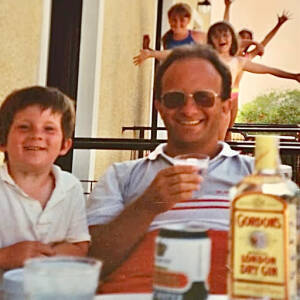Hanging basket progress
The hanging baskets are developing well, thanks to the rain. I managed to get my new computer up and running, deciding not to rely on the reportedly interminable Migration Assistant and instead moving stuff across individually. All seems well - which simply means I have not yet discovered the ghastly error that I have surely made.
One of the most well-known works by Hieronymous Bosch was his triptych The Last Judgement, which was painted in either 1486 or 1504, depending whose account you believe. The concept of the final judgement of humans by their God was an obsession in Medieval Europe. It was assumed that, left to their own devices, all humans were sinful and that they could only be persuaded to behave morally under threats of the most appalling torments in the afterlife. Thomas à Kempis told readers of The Imitation of Christ (1418-1427) that "it is good that, if love of God does not restrain you from sin, the fear of Hell at least should restrain you."
Bosch depicts this vividly, with ghastly relish. On the left wing of his work, the expulsion of Adam and Eve from the Garden of Eden is shown whilst a group of Rebel Angels are expelled from heaven. This story, about proud Lucifer and his followers, is not mentioned in Genesis but does appear in Jewish legends and was added to Christian doctrine.
The other two panels concentrate on the eternal torture and suffering of the condemned sinners, perpetrated by all manner of creatures, some with human features and some not. The torments are tailored to fit the sins. The avaricious are boiled in a cauldron. a glutton is forced to drink something unspeakable from a barrel. A lustful woman is assaulted by a lizard-like monster.
Above all this a much smaller group of virtuous people are welcomed into heaven. The message seems to be that most people are sinners and will suffer for eternity. You have to be really very virtuous indeed to get to heaven so sort yourselves out without delay.

Comments
Sign in or get an account to comment.


